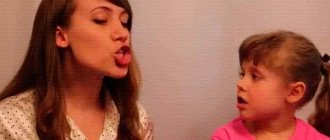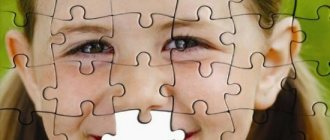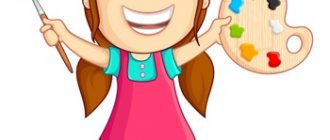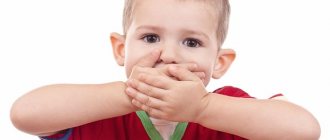The psychomotor development of a young child is an integral part in understanding the world around him and preparing for later life. Preschool age is characterized by a number of changes and metamorphoses, which determine who the little person will become. How can adults understand whether everything is okay and whether specialist help is needed? So, first things first.
What happens in the first 4 years of life
The first four years of life are an important period for a child's development. It is at this moment that the formation of qualities and skills begins. The baby shows interest in the world around him, learns to trust people, develops general self-esteem, etc. In addition, the following processes undergo physiological maturation:
- motor skills;
- sensory;
- speech;
- emotional sphere, etc.
The psychology of 3-4 year old children is changing, thus adapting to independent life. This age is characterized by a break in character, the task of parents is not to break it, but to guide it, so adults need to be patient and wise, adequately perceive children's whims, and calmly explain: what is good and what is bad.
At 3-4 years old, the child’s behavior begins to take on new shades, which sometimes discourages mothers and fathers. The baby becomes capricious, uncontrollable, whiny, and stubborn. Many parents often make a mistake and begin to hobble their children in an authoritarian manner. This approach is incorrect and only generates negativity, developing a number of complexes.
However, there are several types of pathologies that are not recognized by parents in a timely manner. At the age of 3-4 years, a number of psychomotor development disorders appear (autism, speech delay, etc.). Sometimes the diagnosis of such conditions is delayed due to the inattention of loved ones and teachers. Therefore, in order to prevent the development of severe and irreversible disorders, their timely identification and correction is necessary.
Diagnosis of mental processes in children of early preschool age
Marina Vagner
Diagnosis of mental processes in children of early preschool age
And I would like to dedicate this publication to diagnostics. I am still a young specialist, and I do not have proprietary diagnostics that have been tested empirically, so I used diagnostics that I found on the Internet. I took it at an early age, and before using these methods in my work, I carried them out at home, with my child; my son was 2 years old at the time of diagnosis. We tried all the diagnostics that were planned, I will share the most successful and most memorable ones for the child.
Diagnostics of the perception of a child 1 - 3 years old.
Color perception:(4 colors: red, blue, yellow, green)
Stimulus material: colored sets of didactic games “Butterflies and Flowers”, “Flower and Petal”
Example instructions:
“Put a petal of the appropriate color for each flower”;
“show me where the red (blue, yellow, green) petal is”;
“Tell me what color this flower is.” Other tasks are presented similarly.
Standards:
from 1.5-2 years - comparison;
c' 2-3—years selection by name;
at 2.5~3 years - independence of the name.
Analysis of results:
(B) High level: the child understands the task, does everything according to the instructions, without mistakes
(C) Average level: a few mistakes were made
(L) Low level: the child does not understand the task and will not complete a single exercise.
Diagnosis of child attention 1 - 3 years old.
Stimulus material: three tables of 16 cells, where familiar pictures are drawn (not in order).
Instructions: “Here, on the sign, there are pictures. Look and find all the same ones (for example, frogs).”
Standards:
for children 2-2.5 years old - find two repeating pictures;
for children 3-4 years old - find two repeating pictures;
for children 5 years old - finding pictures in a table.
Analysis of results:
(B) High level: the child understands the task and matches all the pictures without errors;
(C) Intermediate level: a few mistakes were made;
(L) Low level: the child does not understand the task and cannot find similar pictures.
Diagnostics of memory of a child 1 - 3 years old.
Memory test “Who lives where?”
Stimulus material: children's lotto “Who lives where?”, consisting of cards and chips.
Instructions: An adult shows the child an animal chip and points to a square with a picture of where this animal lives, then asks him to repeat, shows him the chip and the child must put it on the corresponding square.
Analysis of results
(B) High level - the child understands the task, follows the instructions exactly, arranges all the chips in accordance with the cells;
(C) Average level - minor deviations from the instructions were made, 2 mistakes were made;
(L) Low level - the task was completed incorrectly, the child cannot match the pictures.
Diagnostics of the thinking of a child 1 - 3 years old.
Methodology "Mailbox"
It is aimed at identifying the child’s level of formation in the perception of shape, the ability to distinguish a planar form from a volumetric one and correlate it with a slot; the ability to analyze the location of figures in space.
Stimulus_material: various versions of the “Mailbox”.
Instructions: place a box with figures in front of the child; the figures are taken out. The consultant takes one of the figures, shows its base, circles the corresponding slot and lowers the figure into it. He gestures to continue working. Oral instructions may also be given: “Put all the figures in the box.” You need to start the show with simple shapes.
Analysis_of_results:
Children with normal mental development perceive the task with interest. However, up to 3.5 years, they can act by pushing the figure by force (without taking into account the shape of the slots). After 4 years, children complete the task using the method of trying on, and after 5 years, they move on to visual correlation.
Children with mental retardation show interest in the task itself. They have inappropriate actions less often than mentally retarded children, and their work is of higher quality. They use help, take into account their mistakes and do not make them when repeating them.
Mentally retarded children often do not complete this task on their own. Their actions are not purposeful, they use forceful pushing of the figure into the slot, at best a trial method. Sometimes the task is replaced by manipulation with figures. Help is ineffective. When executed again, the same errors are made.
(B) High level - the child understands the task, follows the instructions exactly, pushes all the figures into the correct holes intended for them;
(C) Average level - minor deviations from the instructions were made, several mistakes were made;
(L) Low level - the task was completed incorrectly, the child does not understand what is required of him and uses the figures for other purposes.
You can also use “Seguin” Boards , Methodology” Inserts (“Bowls”)
What does a psychologist evaluate?
Psycho-emotional status of children 3-4 years old (younger group), which is characterized by physical and mental state.
Physical development: assessed by coordination of movements, performing simple movements (jumping, squatting, overcoming simple obstacles, etc.). Fine motor skills are also assessed, namely the synchronization of hand movements.
To assess a child’s speech development at a young age, it is necessary to determine his vocabulary, which should not be passive. Namely, understanding the meaning of a story or conversation, requests. The presence of a certain volume of words that denote household items, clothing, toys, etc.
The child’s vocabulary, which he actively uses in his speech, must be characterized by a semantic basis. During this period, he must have an idea of the concept of “letter” and know several vowels. Be able to compose a simple story based on questions or the availability of visual material. The child masters concepts that generalize objects:
- utensils (pot, frying pan, forks, spoons, etc.);
- toys (doll, car, lego, ball, spinning top, etc.);
- furniture (table, chair, bed and other items), etc.
Mental development is assessed based on acquired skills:
- attention – the child is able to concentrate on an object for 4-5 minutes;
- memory – can remember about five objects and names them after a few minutes;
- thinking - the baby must know everything about himself (his name, how old he is), the names of surrounding objects, can compare them by size, knows several geometric shapes, the names of colors. Has an understanding of numbers, can count from 1 to 10. The offer of a new toy arouses interest, he understands how to play with it;
- imagination – the ability to complete a started image;
- emotional development – when meeting someone, he responds with goodwill and makes contact easily.
We check compliance with the word pattern.
Ask your child to repeat after you words of 1-3 syllables.
Example words : chair, table, scarf, thunder, elephant, eyebrow, leaf, hail, snow, plaid, maple, food, cake, wolf, elevator, bread, hand, face, rose, fox, sea, grove, saw, sky , dew, goat, forest, axe, lawn, fence, spout, sand, skein, plant, scoop, sandpiper, bag, chest of drawers, bag, pattern, car, milk, knee, cabin, wheel, crown, feather bed, magpie, head , gate, town, bun, hammer, nightingale, fly agaric, pedestrian, samovar, leash, kitten, headband, scooter.
Assess whether the child follows the sequence of sounds and syllables. Use words that the child pronounces inaccurately or not always accurately. Avoid words that are overloaded with consonant clusters, when 2-3 consonant sounds come in a row (for example, pillar, potato). Let the child repeat several unfamiliar words of 2-3 open syllables: mine, viburnum.
If you had to teach your child the pronunciation of such words, check if he can repeat them after some time. Do not offer words with sounds that the child cannot pronounce or misses. All sounds must be pronounced somehow, albeit distorted.
Result:
a) The child confuses the order of syllables in familiar words; the same word can be pronounced differently. Sometimes the word is distorted beyond recognition. New words are remembered with great difficulty, learned words are quickly forgotten - there is ONR
b) The picture of the words is not damaged or is slightly damaged. A child sometimes swallows one of the sounds in familiar words: table - “tol”, scarf - “shaf”. This is not a system, but concerns some words. The child may confuse the order of syllables in unfamiliar words. If you learn a word with him, he is able to repeat it correctly after some time - the norm.
Checking phrasal speech
Two-word sentences (subject + predicate). Show your child how a toy dog runs. If the child himself does not comment on the actions, ask: “What is the dog doing?” The child can answer in monosyllables: “Running.” Then ask: “Who is running?” The child will say: “Dog.” Although he has not constructed a detailed phrase, he has this phrase in his head. Do the same action with other toys. If the child is silent, encourage him to say: “Here is a dog running. And now? (A cat, a bunny is running.)" Using the same toys, depict other actions: "Here is a dog running. And now... (the dog jumps, bites, barks).” Use gestures and onomatopoeia to explain actions. Combine the last two tasks, pushing the child to utter complete phrases: “The dog is barking. The cat meows. The cat is running. The dog is running. The dog is jumping."
Three word sentences (subject + predicate + object). Perform actions whose meaning can only be conveyed by a verb with an object: waving my hand, bathing a doll. Ask: “What am I doing?” If a child uses a verb without an object: “You’re waving,” clarify: “With what?” - “Waving your hand.” Sample sentences . You kiss mom. You wash your hands. You are brushing your teeth. You are petting the cat. You throw the ball. You comb your hair. You are looking for a pen.
Sentences with two subjects or predicates with the conjunction “and” or “a”. Use two toys to perform the same action: “The dog and the cat are running. The dog and cat are eating." The child comments on the actions. A similar task for sentences with listed predicates: “The dog runs and barks. The dog barks and bites." Perform various actions with toys: “The cat runs and the dog sits. The dog barks and the cat meows.”
Sentences with prepositions . Perform actions that can be commented on using prepositions: in, to, by, on, above, under, for, near. Sample sentences . You look out the window. The ball rolls on the floor. You go to the window. You put your pen on the table. The ball rolled under the sofa. You are standing near the table.
Ask leading questions.
Result:
A) The child does not form phrases, uses individual words, and fills in gaps in speech with gestures. Sentences are constructed grammatically incorrectly, prepositions and conjunctions are not used in speech - a severe form of OHP.
It is difficult to construct independent sentences; basically, the child tries to repeat after you. Sentences based on opposition are difficult to come by - an easier form of OHP.
B) The child copes with tasks; sometimes he may confuse prepositions - this is normal.








